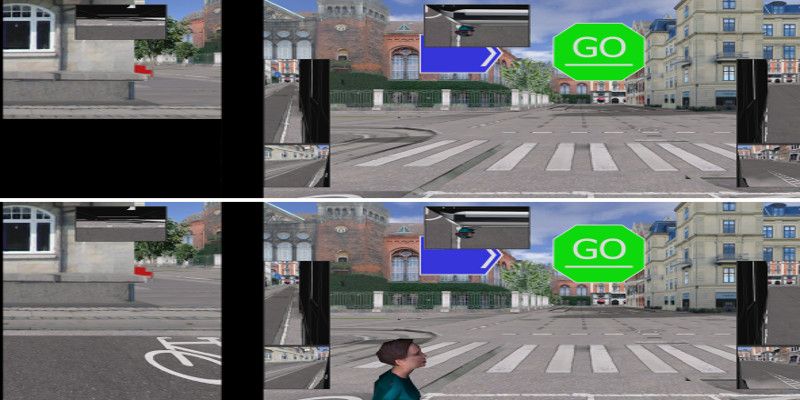
The size of a lorry's windscreen can have a dramatic impact on the safety of other road users, according to a series of experiments conducted by psychologists at the University of Leeds.
The research, commissioned by Transport for London, is the first to simulate how drivers’ reactions would differ if their vehicle had a larger windscreen – in what is known as a ‘low entry cab’ - compared to that of a traditional cab, where drivers rely more on mirrors.
The findings have been used to create the first ever Direct Vision Standard for HGVs, which will categorise lorries using a star rating system, ranging from zero stars for vehicles with the lowest direct vision to five stars for the highest. From 2020, those with zero stars will be banned from the capital’s roads.
Conducted by Dr Richard Wilkie and Dr Callum Mole in the university’s School of Psychology, the simulations found that drivers respond on average 0.7 seconds slower when they have to check blindspots in mirrors and monitors compared to being able to view them directly through a large windscreen and side windows.
At a speed of 15mph, a delay of 0.7 seconds would result in the lorry travelling an extra 4.7 metres before seeing a nearby road user. Average driving speeds in London between 7-10am are 14.6mph.
Dr Richard Wilkie said: “By using virtual-reality driving simulation techniques we have been able to examine situations that are impossible to investigate in the real world in a controlled way.
“We’ve shown that direct vision could help to avoid dangerous collisions.
“Even if a lorry was travelling at just 5mph, a 0.7 second delay would result in the vehicle travelling an extra 1.5 metres. It would be far enough to cause death or serious injury to a vulnerable road user, such as a cyclist.”
The study was carried out in the University of Leeds Perception Action Cognition Laboratories.
In the first set of simulations, drivers steered through a virtual city following a series of directional and stop/go signs whilst spotting objects that appeared, while having their response time was measured.
In the second set of simulations, researchers monitored what would happen if pedestrians walked out in front of the HGV drivers.
The number of drivers colliding with simulated pedestrians was 23% higher for the traditional cabs, compared to the low entry cabs.
When the drivers were required to perform a mental task while driving, collisions were 40% higher in the traditional cabs, demonstrating that a distracting task may disproportionately affect drivers of cabs without direct line of sight to vulnerable road users.
The research was conducted in collaboration with consultancy firm Arup.
Dan Evanson, Logistics/Freight Consultant for Arup, said: “This study is aimed at saving lives and avoiding injury.
“By running the first simulated cognitive tests on drivers of this nature, we have demonstrated that direct visibility is a significant factor in accident avoidance.
"Reducing HGV drivers’ reliance on multiple mirrors and in-cab visual display units could significantly improve the safety of our roads.
“It gives city leaders and policy makers around the world clear evidence that introducing lorries with bigger windows will make city streets safer for cyclists and pedestrians.”
Leon Daniels, Managing Director of Surface Transport, TfL said: “Removing lorries that are unsuitable for London’s busy roads will improve road safety for all.
“Our Direct Vision Standard will be key in this and by continuing to engage with the freight industry it can begin to have a positive effect now.”
Arup is currently assessing the cost of vehicle redesign and building the benefits case for the EU to implement these changes.
FURTHER INFORMATION
To intervew Dr Richard Wilkie or Dr Callum Mole, please contact Sophie Freeman in the University of Leeds Press Office on 0113 343 8059 or email s.j.freeman@leeds.ac.uk
The image shows part of the simulation used by the researchers.